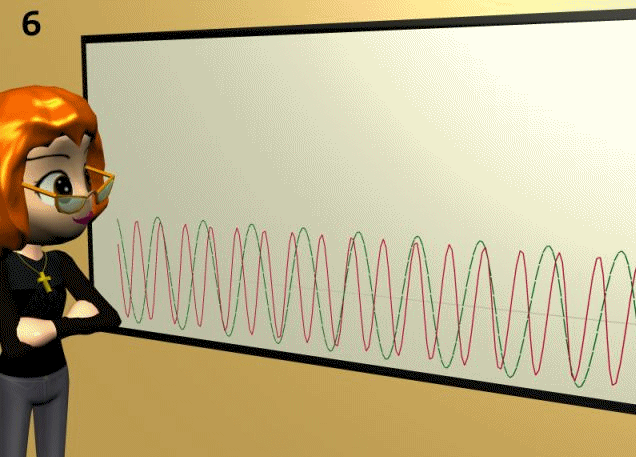Friday, October 25, 2013
11, 17, 33
Polistra was thinking about life cycles of the annoying aphids, and decided to examine a more obvious life cycle. Why do cicadas pick 17? Assuming the cicada had already decided on a multi-year larval stage, there must have been some 'tuning' on the epigenes to hit 17 as an optimum. But optimum by what standard?
Obvious first guess: it's about halfway between 11 and 22. 17 should be the point of least synchrony with 11-year sunspot cycles, providing the best rotation among weather conditions, and the best rotation among predators whose populations respond directly to weather conditions.
 The graph shows the rotation fairly well but not dramatically. Green (static) graph represents a century of 11-year sunspot cycles. Red (changing) graph represents red-eyed cicada cycles of various lengths, labeled in the upper corner of the picture.
Complicating the hypothesis: 17 is also half of 34, which is a stronger weather cycle than 11. This could put the emergence of cicadas in permanent sync with big storms, or in permanent sync with just-right seasons. Is that good or bad?
The graph shows the rotation fairly well but not dramatically. Green (static) graph represents a century of 11-year sunspot cycles. Red (changing) graph represents red-eyed cicada cycles of various lengths, labeled in the upper corner of the picture.
Complicating the hypothesis: 17 is also half of 34, which is a stronger weather cycle than 11. This could put the emergence of cicadas in permanent sync with big storms, or in permanent sync with just-right seasons. Is that good or bad?
 The graph shows the rotation fairly well but not dramatically. Green (static) graph represents a century of 11-year sunspot cycles. Red (changing) graph represents red-eyed cicada cycles of various lengths, labeled in the upper corner of the picture.
Complicating the hypothesis: 17 is also half of 34, which is a stronger weather cycle than 11. This could put the emergence of cicadas in permanent sync with big storms, or in permanent sync with just-right seasons. Is that good or bad?
The graph shows the rotation fairly well but not dramatically. Green (static) graph represents a century of 11-year sunspot cycles. Red (changing) graph represents red-eyed cicada cycles of various lengths, labeled in the upper corner of the picture.
Complicating the hypothesis: 17 is also half of 34, which is a stronger weather cycle than 11. This could put the emergence of cicadas in permanent sync with big storms, or in permanent sync with just-right seasons. Is that good or bad?
